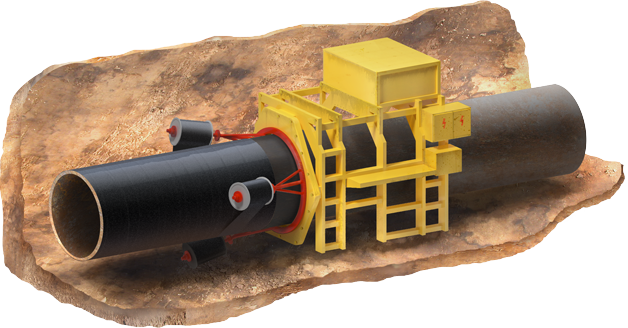The condition of gas pipelines is continuously monitored. High-technology “pigs” crawling through pipelines in hard-to-reach areas help people do it.
Kilometers and billions
The length of Gazprom-operated gas pipelines is 160,400 kilometers. That’s enough pipelines to circle the Earth four times. The service life of over 70 per cent of all existing pipelines exceeds 20 years. The gas transmission system was built in such a way that pipelines can lie in the ground or underwater for decades without the need for replacement or repairs. However, Gazprom annually invests funds in the renovation and repairs of the gas transmission system. These funds are used for regular inspection of gas pipelines and identification of corroded sections and sections that need to be replaced. As much as RUB 36.5 billion were allocated to this end in 2009.
Gas pipeline: how much is left for me?
Replacement of damaged pipes is not always necessary. It is possible to estimate the remaining service life of a gas pipeline using special calculations. It is called a “remaining life assessment”. Metal corrosion rate and soil corrosivity are needed for these calculations. Sometimes, it is enough to re-insulate a section by replacing its anti-corrosion protective coating. To do so, they use bitumen coating, factory applied polyethylene coating, or polymeric tapes.

0.2 accidents per year
The so called local accident rate is analyzed in order to schedule the next inspection.
Data on incidents or failures in the gas pipeline section, expert reviews of design and engineering features, as well as data on construction and operation conditions and current technical state of the section are needed to analyze the local accident rate.
The accident rate is measured by the number of accidents per gas pipeline section with the length of 1,000 kilometers during one year of its operation. The statistics is as follows: the annual average accident rate at Russian gas trunklines is 0.2 accidents per 1,000 kilometers.
Pig inspection
Many gas pipelines are located in regions with harsh climatic conditions, which makes them difficult to access. Special methods are used to inspect their condition. One of them is the in-pipe inspection with the use of special pistons – intelligent pigs.
Pigs are special battery-powered tools, which crawl through the pipe and record the gas pipeline data.
A pig to crawl inside the section of Nord Stream will have to cover over 1,200 kilometers.
drives the pig
to identify defects
The use of special techniques and equipment for repairing gas pipelines leads to substantial saving in fuel and energy resources. New techniques of wells testing and repairing make it possible to boost energy savings and energy efficiency. In 2009, Gazprom saved 2.6 million tons of fuel equivalent, including 2,179.3 million cubic meters of natural gas. This volume would be enough to supply the Novosibirsk Oblast or the Tomsk Oblast with fuel.

